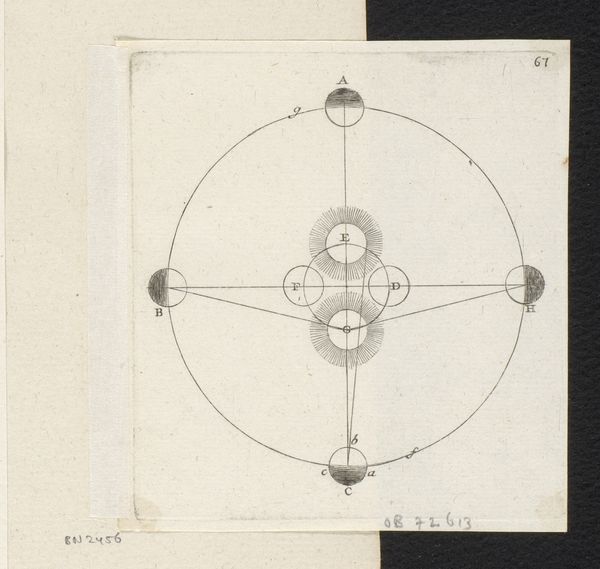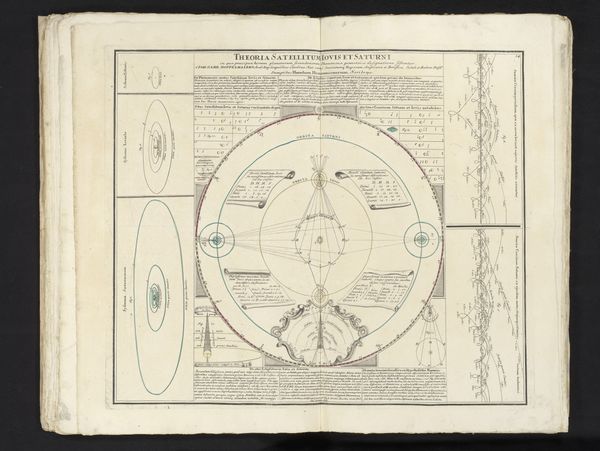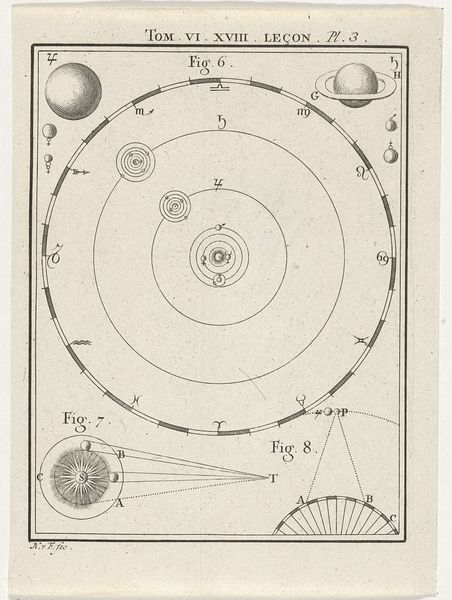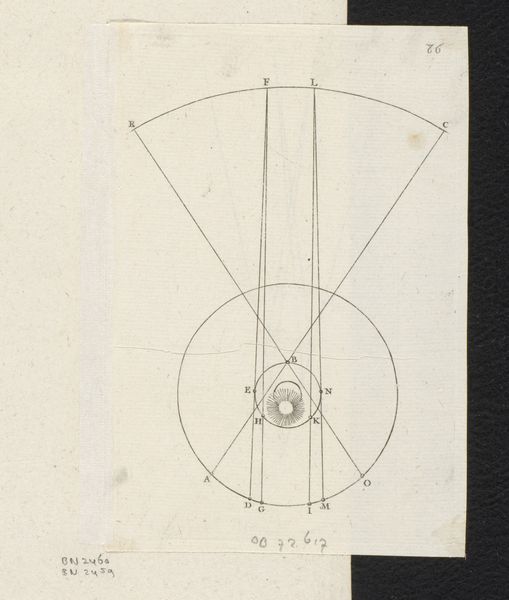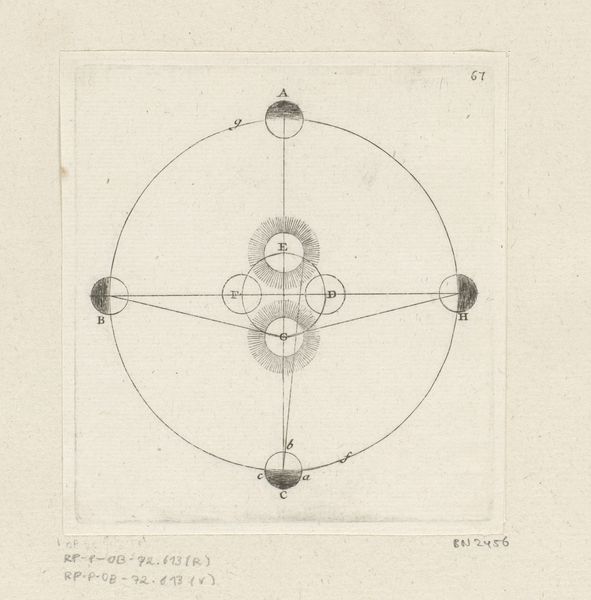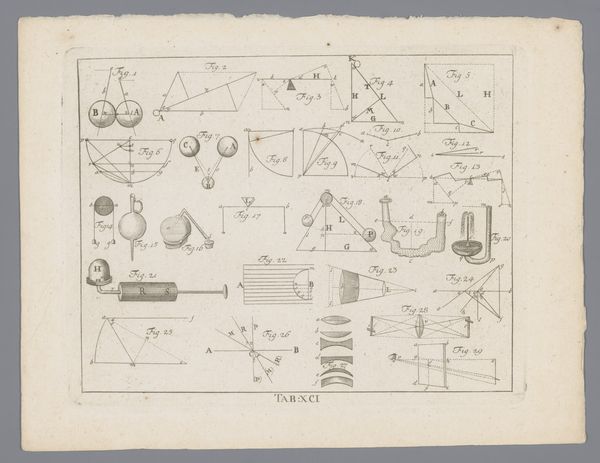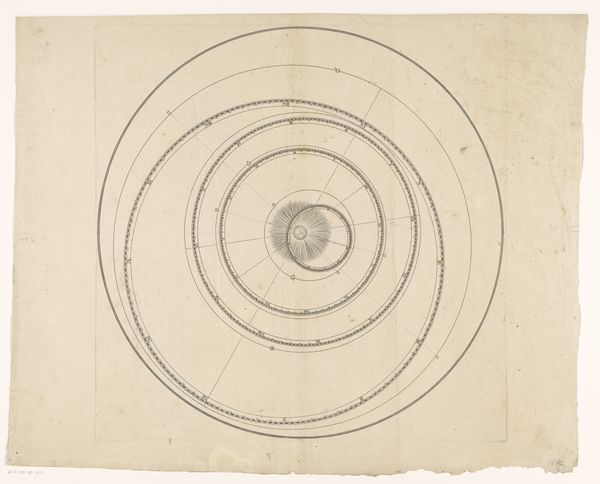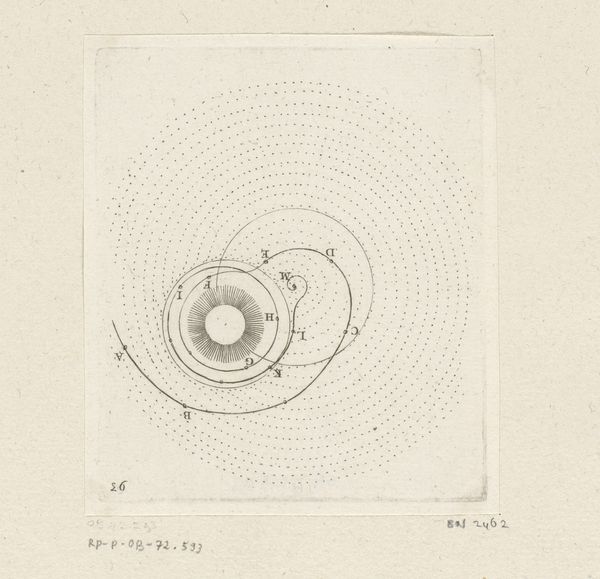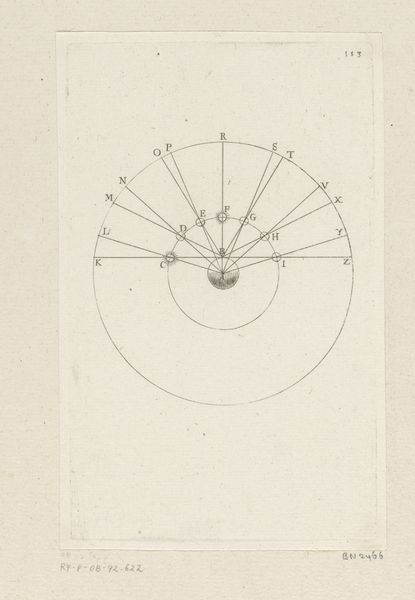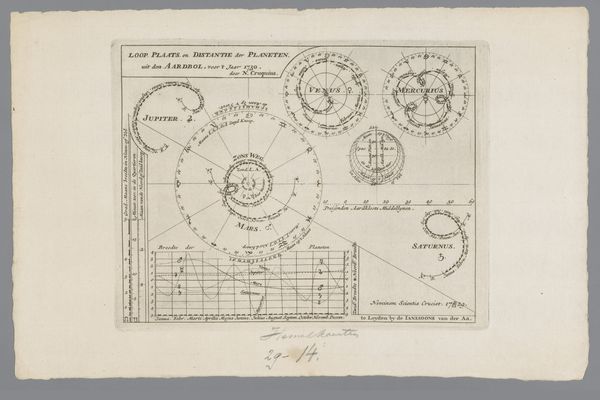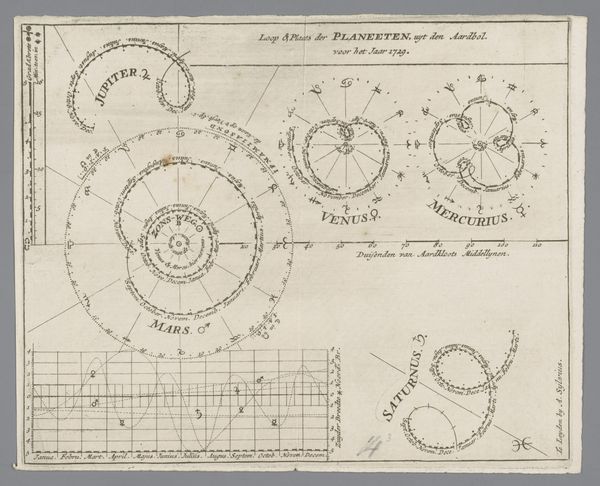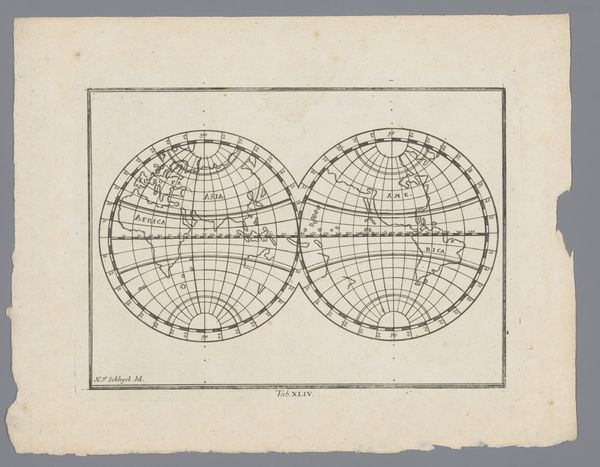
Dimensions: height 186 mm, width 230 mm
Copyright: Rijks Museum: Open Domain
Editor: This print, titled "Encyclopedische voorstelling van de maan en planeten," dating back to 1774, shows an anonymous rendering of the cosmos. I'm struck by how it blends scientific illustration with an almost dreamlike quality, like a memory of something vast and unknowable. What resonates with you most about this piece? Curator: The imagery holds a deep fascination, doesn’t it? Beyond its scientific intent, it is steeped in visual traditions. Think of the sun, centrally located with radiating lines – it’s reminiscent of divine light, like halos in religious iconography. The planets themselves, rendered as spheres, echo the orb of royal authority. Editor: So, even a scientific diagram uses familiar symbols? Curator: Absolutely. Notice how the geometric diagrams coexist with representational planets. This interplay embodies the Enlightenment's project of ordering the world through both observation and reason. The cosmos, once solely within the realm of gods, is being mapped and quantified. Consider how the planets are staged almost as landscape elements with shadows and volume – what psychological associations do they trigger? Editor: The spheres almost look like stylized mountains... I guess it grounds these far-off places. So, these images are more than just informative, they're about humanity's relationship to the cosmos. Curator: Precisely. These visual languages carry within them centuries of cultural memory, layered and repurposed to shape how we perceive even the seemingly objective world. The symbolic power of form persists. What an efficient demonstration! Editor: That makes me look at these celestial spheres in a totally different light!
Comments
No comments
Be the first to comment and join the conversation on the ultimate creative platform.
